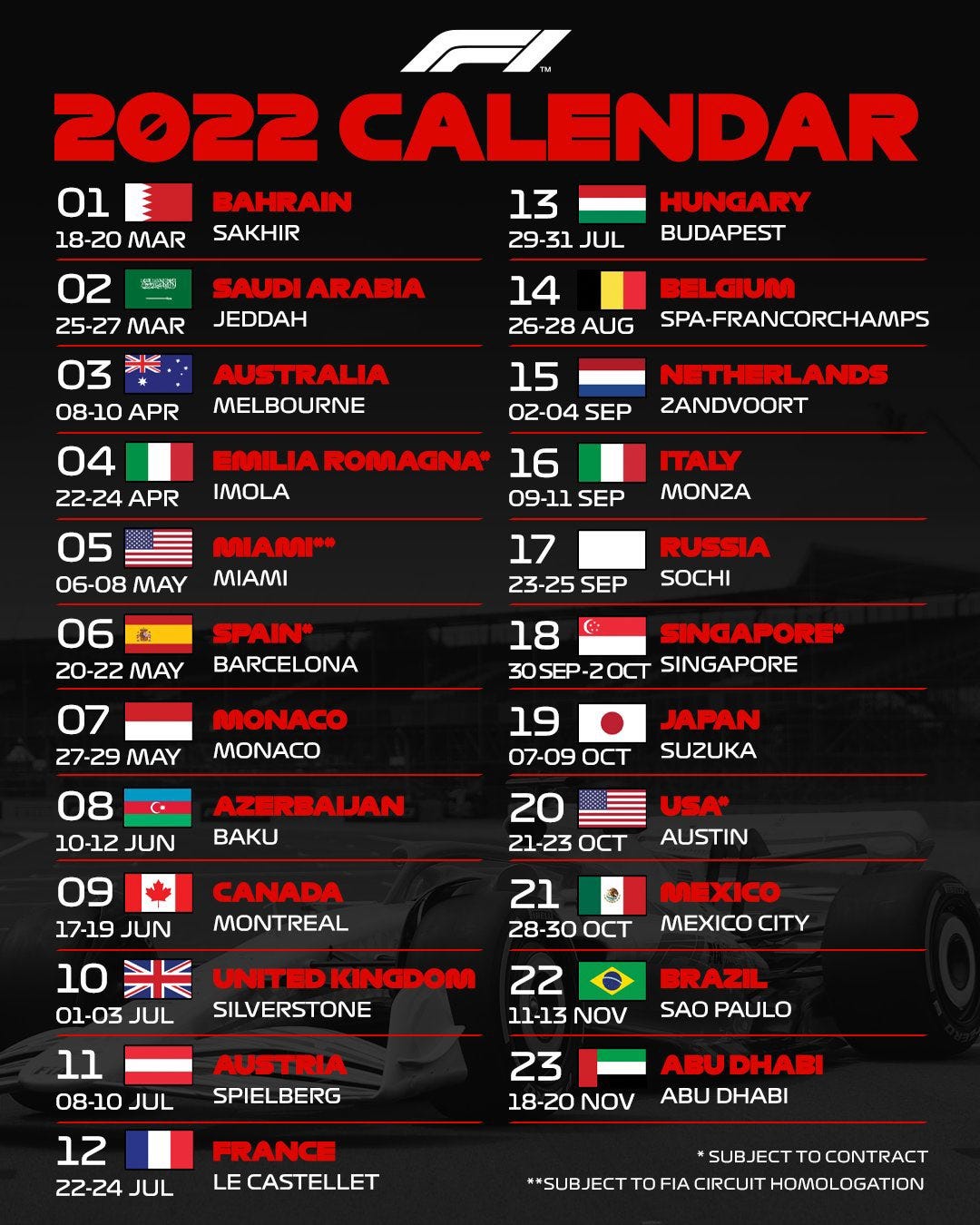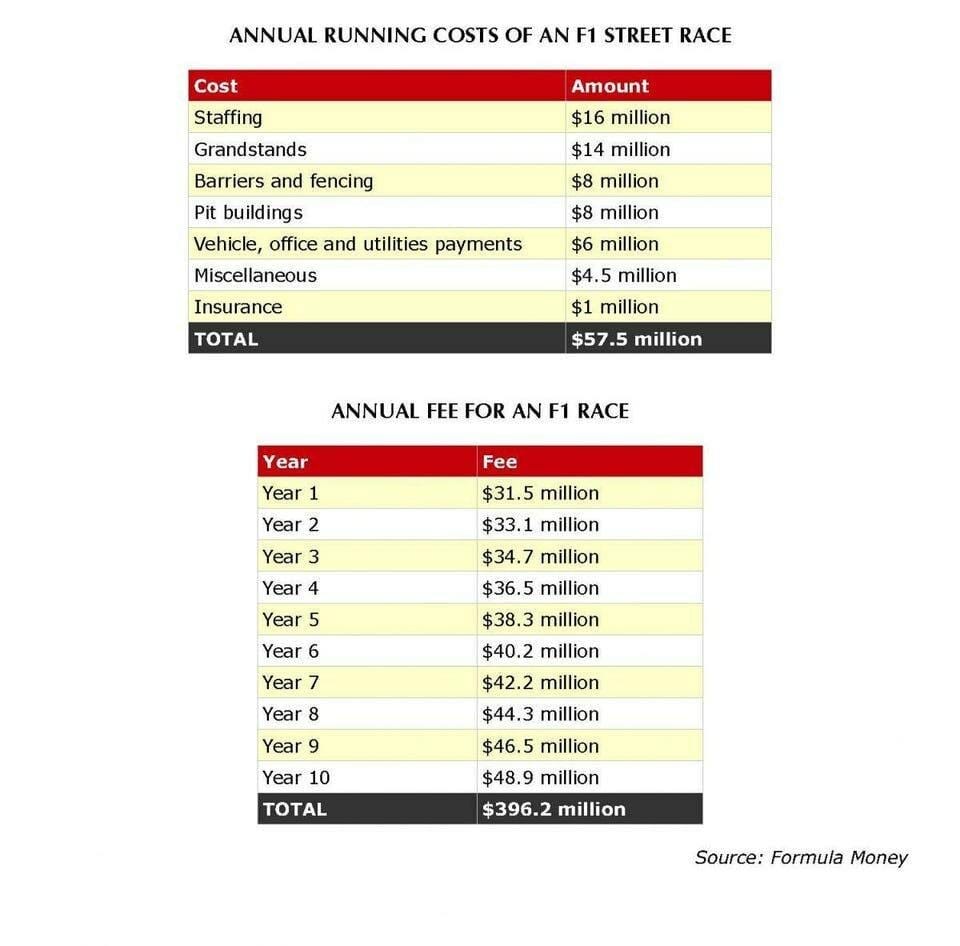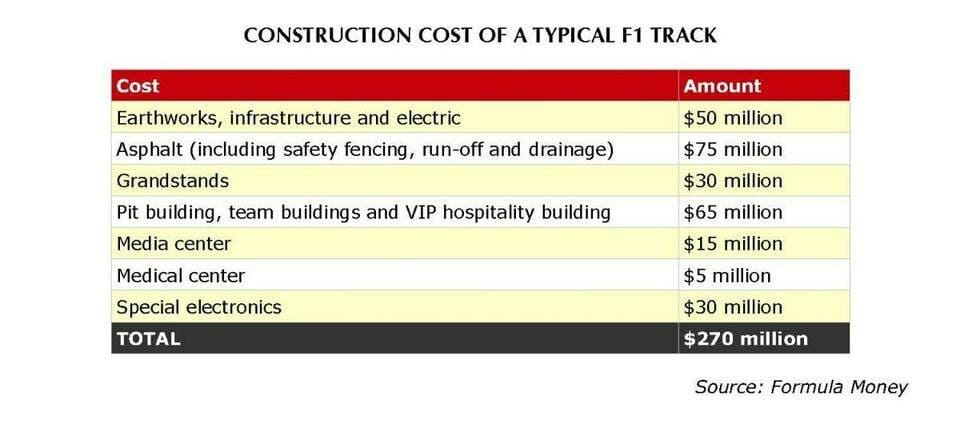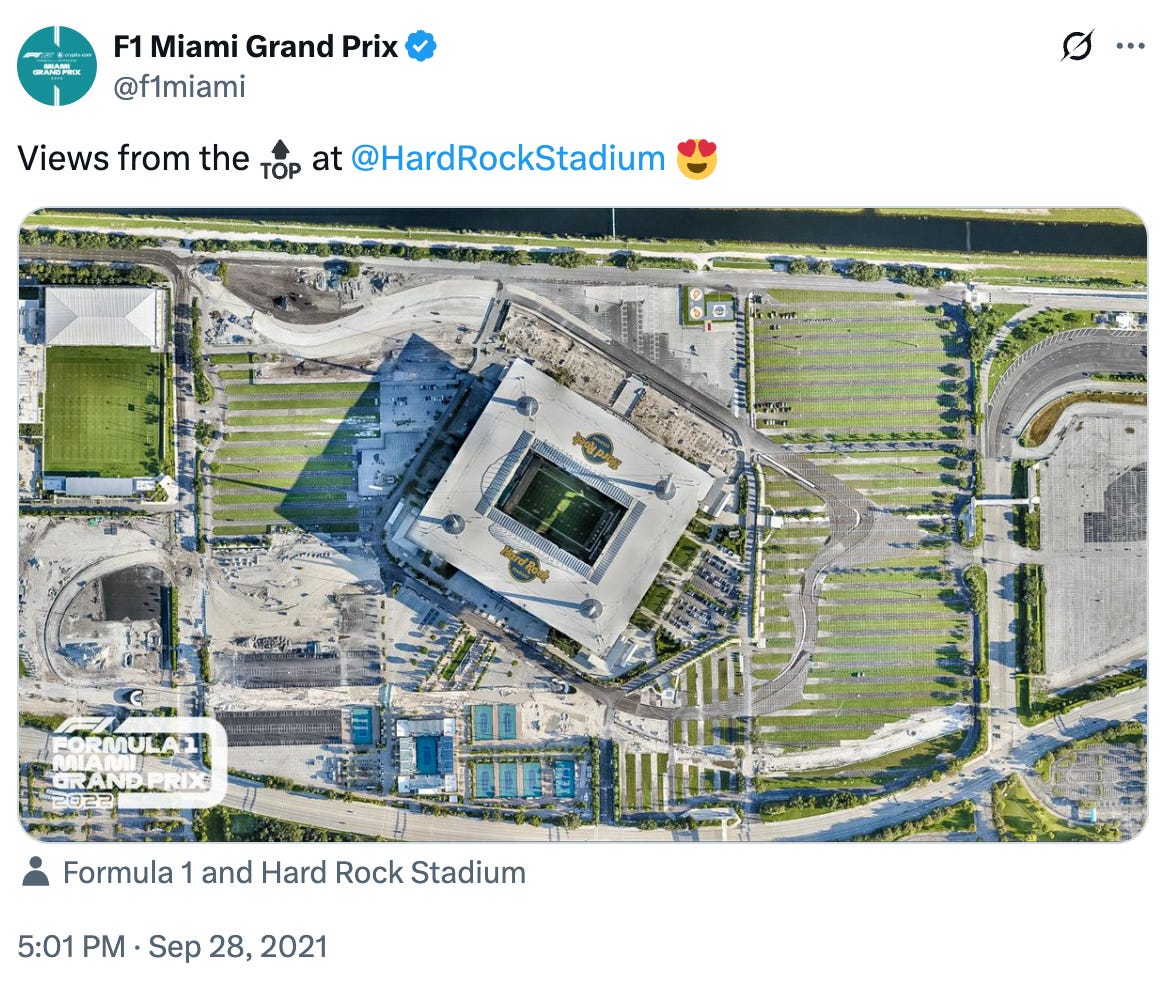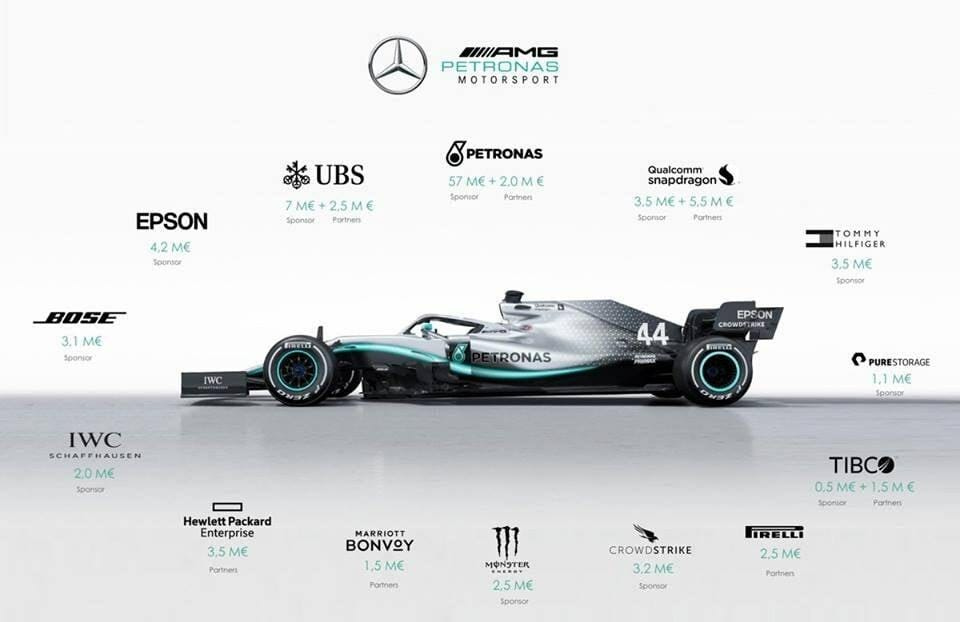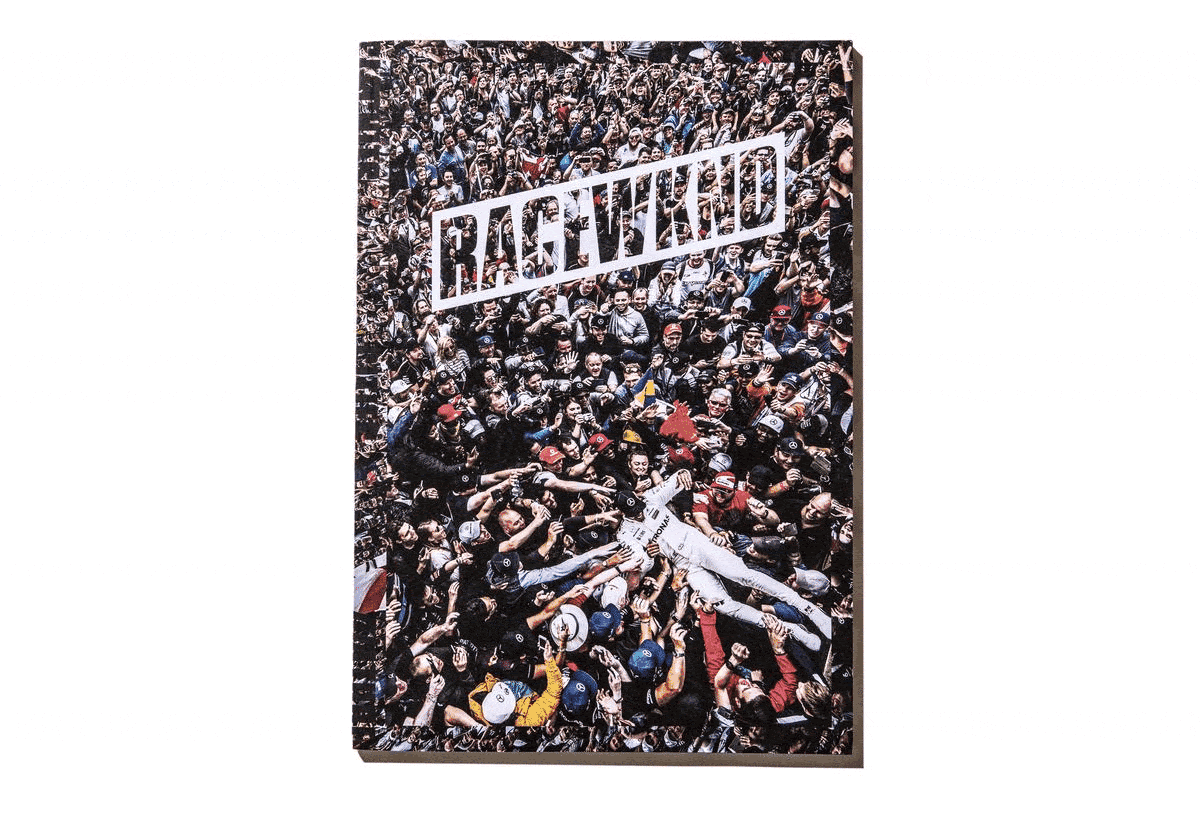From the Archives: How does Formula 1 Make Money?
You are receiving this email because you subscribed to Business of Speed, the newsletter for those wanting to stay ahead on what’s happening behind the scenes. I’m Vincenzo Landino, a business, tech, and F1 commentator. I’ve spent the last ten years at the intersection of content, partnerships, and the business of motorsport. This newsletter is where I break down what’s working, what’s shifting, and what’s next without the PR gloss. Thank you for being here.
originally published November 2021
The more of you that are learning about Formula 1 and the fantastic sport that it is, the more questions like this I’ve been getting.
How the heck does Formula 1 make money?!
A little background
Not too long ago, Formula One was a bit of a mess. Many of the problems stemmed from former F1 boss Bernie Ecclestone and the complex web of holding companies he was involved with.
The series even shed 12% of its value—more than $1 billion—in less than five years.
Then came January 2017, when billionaire John Malone and his Liberty Media stepped in and purchased the series for USD 8 billion.
F1 has since found some solid ground. In 2018, the series generated $1.83 billion in revenue, a 2.5% year-over-year increase.
F1’s revenues took an $877 million hit last year, falling 43% as a result of the Covid-19 pandemic. Revenues totaled USD 1.145 billion, compared to USD 2.022 billion in the previous period. The season featured only 17 races, mostly without spectators, and included highlight events such as Monaco and Singapore, which were canceled.
F1’s stock, $FWONK, has a USD 12.5 billion market cap and is trading at an all-time high (the share price is up 62% since Liberty’s purchase). American television audiences are growing, as is global race viewership.
Ch-ch-ch-changes
The 2022 season will span a record 23 races over eight months — March in Bahrain to November in Abu Dhabi.
A Formula One Grand Prix is one of the world’s most powerful tourism advertisements. F1’s races are seen by over 400 million viewers on television, making it one of the world’s most-watched sports series.
Like in most sports, the operations of the championship carry high costs.
The team spending cap is scheduled to come down to USD 140 million (~£100 million) in 2022 and USD 135 million in 2023.
What does it cost to host a Grand Prix?
There is no rate card for a Grand Prix, and it’s challenging to know the exact costs and fees associated with hosting the race.
Here’s a chart from F1 research firm Formula Money:
One way to avoid the high annual running costs is to host a race on a permanent facility. Rather than incurring costs each year, there is a massive upfront investment.
The Miami GP is doing a great job showcasing the build of their track on social media. I highly recommend following them to see the progress of the track F1 will race on in May 2022.
Why would a government pay for an event like this?
In my eyes, it’s simple: tourism and prestige.
For any country or region that hosts a Formula 1 Grand Prix, the benefits are numerous, including tourism revenue, job opportunities for the local community, and the prestige of the event itself. Formula 1 is renowned for attracting a diverse range of powerful spectators and celebrities alike.
Tourism isn’t a one-time benefit either.
When people visit a country and are given a great experience, they’ll want to go back over and over, regardless of the race.
How are teams financing their expenses?
Individual Formula 1 teams have between 75% to 90% of their expenses covered through commercial partnerships and sponsorships, with the remainder coming from prize money, owners’ investments, merchandising, and TV rights.
Below are two diagrams for Scuderia Ferrari and a Mercedes AMG Petronas car, surrounded by some of the sponsors and partners that contribute to their revenues:
The Financial Tug of War
With spending regulations on the horizon and the push for initiatives like sustainability, the Formula 1 series and its teams have a long road ahead if they want to remain profitable.
With American expansion coming fast and furious (not a great pun), hopes lie in what newer audiences can bring to the table.
A common challenge I hear from new fans of the sport is accessibility.
Accessibility to merchandise, tickets, and more content. Cost remains a significant factor for many when it comes to investing, especially in a new sport they aren’t yet fully invested in.
More fans will surely help as a rising tide raises all ships. More fans mean more merchandise and more tickets sold.
More fans mean more sponsors.
Business of Speed is a weekly newsletter that explores the world of business, money, and tech in sports.
And if you enjoyed this breakdown, subscribe to Business of Speed for more on the business behind Formula 1 and motorsport. Let's connect the dots. And, if you're a brand eyeing motorsport or looking to get more out of your current motorsport partnership, let’s work together.
Speaking of F1 culture…
The RACEWKND magazine is an incredible dive into the world of F1 race tracks and the culture of the cities they’re hosted in.
I highly recommend you pick up a copy, available now on Amazon.



